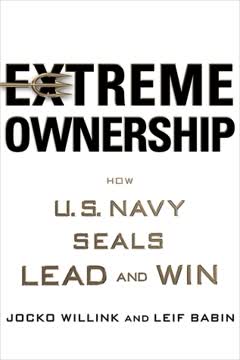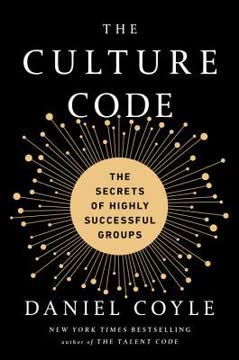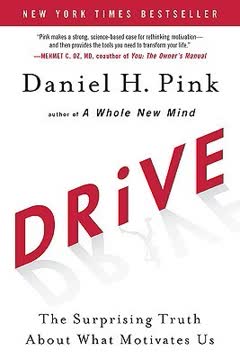Key Takeaways
1. The Circle of Safety: Building trust and cooperation in organizations
When we feel like we belong to the group and trust the people with whom we work, we naturally cooperate to face outside challenges and threats.
Trust is foundational. Organizations thrive when leaders create a "Circle of Safety" where employees feel protected and valued. This environment fosters trust, cooperation, and innovation, enabling teams to focus on external challenges rather than internal threats.
Key elements of the Circle of Safety:
- Open communication
- Mutual support
- Shared values and goals
- Empowerment and autonomy
When employees feel safe, they're more likely to:
- Take calculated risks
- Share ideas freely
- Collaborate effectively
- Commit to the organization's mission
2. Leadership is about protecting and serving others, not self-interest
Leadership is not a license to do less; it is a responsibility to do more.
Servant leadership. True leaders prioritize the well-being of their team members over personal gain. This approach builds loyalty, trust, and commitment within the organization.
Characteristics of effective leaders:
- Empathy and understanding
- Willingness to sacrifice for the team
- Focus on developing and empowering others
- Accountability for both successes and failures
By putting others first, leaders create a ripple effect of positive behavior throughout the organization, fostering a culture of mutual support and shared success.
3. Our biology drives workplace behavior: The power of E.D.S.O. chemicals
When the system is in balance, however, we seem to gain almost supernatural ability. Courage, inspiration, foresight, creativity and empathy, to name a few.
Chemical balance matters. Four key chemicals – Endorphins, Dopamine, Serotonin, and Oxytocin (E.D.S.O.) – significantly influence our workplace behavior and relationships.
Understanding E.D.S.O.:
- Endorphins: Mask physical pain, enable perseverance
- Dopamine: Provides motivation and reward for achievement
- Serotonin: Fosters pride, confidence, and status
- Oxytocin: Builds trust, loyalty, and social bonds
Leaders who create environments that balance these chemicals foster more productive, innovative, and cohesive teams. Recognizing the role of biology in workplace dynamics can help organizations design better policies and practices to support employee well-being and performance.
4. Empathy and human connection are essential for organizational success
Empathy is, as Johnny Bravo explains, "a second by second, minute by minute service that [we] owe to everyone if [we] want to call [ourselves] a leader."
Cultivate meaningful relationships. In today's fast-paced, technology-driven work environment, human connection and empathy are more crucial than ever for building strong teams and successful organizations.
Ways to foster empathy and connection:
- Active listening
- Face-to-face interactions
- Team-building activities
- Mentorship programs
- Celebrating collective achievements
By prioritizing empathy and human connection, leaders can create a more supportive work environment, leading to increased employee satisfaction, loyalty, and productivity.
5. The dangers of abstraction and the importance of human-centered leadership
When we divorce ourselves from humanity through numerical abstraction, we are, like Milgram's volunteers, capable of inhuman behavior.
Humanize your metrics. As organizations grow and rely more on data-driven decision-making, there's a risk of losing sight of the human impact of those decisions. Leaders must balance quantitative metrics with qualitative understanding of their people.
Strategies for maintaining a human-centered approach:
- Regular face-to-face interactions with employees at all levels
- Storytelling to illustrate the human impact of decisions
- Incorporating qualitative feedback in performance evaluations
- Encouraging cross-functional collaboration and empathy
By keeping the human element at the forefront, leaders can make more ethical and effective decisions that benefit both the organization and its people.
6. Balancing short-term results with long-term organizational health
Profit isn't worth violating their integrity.
Long-term thinking. While short-term results are important, prioritizing them at the expense of long-term organizational health can be detrimental. Leaders must strike a balance between meeting immediate goals and building a sustainable, thriving organization.
Key considerations for balancing short and long-term focus:
- Invest in employee development and well-being
- Maintain ethical practices, even when facing pressure
- Foster a culture of innovation and continuous improvement
- Build strong relationships with stakeholders
- Regularly reassess and align organizational values and practices
By taking a balanced approach, organizations can achieve sustainable success and maintain their integrity in the face of challenges.
7. Overcoming modern workplace challenges: Technology, generational gaps, and purpose
Human beings have thrived for fifty thousand years not because we are driven to serve ourselves, but because we are inspired to serve others.
Adapt and inspire. Modern workplaces face unique challenges, including technology addiction, generational differences, and a search for purpose. Leaders must address these issues to create thriving organizations.
Strategies for overcoming modern workplace challenges:
- Implement policies to manage technology use and foster face-to-face interaction
- Bridge generational gaps through mentorship and reverse mentorship programs
- Clearly communicate organizational purpose and how each role contributes
- Encourage work-life balance and personal growth
- Create opportunities for meaningful collaboration and shared experiences
By addressing these challenges head-on, organizations can create more engaged, productive, and fulfilled workforces.
8. Creating a culture of integrity and accountability
Integrity is when our words and deeds are consistent with our intentions.
Walk the talk. A culture of integrity and accountability is essential for building trust, both within the organization and with external stakeholders. Leaders must model these values consistently and create systems that reinforce them.
Elements of a culture of integrity and accountability:
- Clear communication of ethical standards and expectations
- Transparency in decision-making processes
- Consistent enforcement of policies across all levels
- Recognition and reward for ethical behavior
- Safe channels for reporting concerns or violations
- Regular ethics training and discussions
By prioritizing integrity and accountability, organizations can build a strong reputation, attract top talent, and create a more resilient and successful business.
9. The impact of shared struggles on team bonding and innovation
It is not the work we remember with fondness, but the camaraderie, how the group came together to get things done.
Embrace challenges together. Shared struggles and challenges can be powerful catalysts for team bonding and innovation. When teams face difficulties together, they often emerge stronger and more cohesive.
Ways to leverage shared struggles for team growth:
- Frame challenges as opportunities for collective problem-solving
- Celebrate small wins and progress along the way
- Encourage open communication about obstacles and concerns
- Provide resources and support for overcoming challenges
- Reflect on lessons learned and growth after overcoming difficulties
By embracing shared struggles, teams can develop stronger bonds, enhance their problem-solving skills, and drive innovation within the organization.
Last updated:
FAQ
What's Leaders Eat Last about?
- Focus on Leadership: Leaders Eat Last by Simon Sinek delves into leadership dynamics, emphasizing the importance of leaders prioritizing their team's well-being over personal gains.
- Circle of Safety: Introduces the "Circle of Safety," a concept where leaders create a secure environment, protecting employees from external threats and internal politics.
- Biological Basis: Discusses how neurochemicals like oxytocin, serotonin, and dopamine influence workplace behavior and leadership effectiveness.
Why should I read Leaders Eat Last?
- Understanding Human Behavior: Offers insights into the biological and psychological factors affecting workplace dynamics, enhancing leadership practices.
- Improving Workplace Culture: Provides practical advice for creating a positive culture that fosters collaboration and loyalty.
- Real-World Examples: Uses compelling stories from military and corporate settings to illustrate key concepts, making them relatable and applicable.
What are the key takeaways of Leaders Eat Last?
- Leaders Eat Last: Effective leaders prioritize their team's needs, fostering loyalty and commitment.
- Empathy is Essential: Empathy is crucial for leaders, leading to a more engaged and productive workforce.
- Trust and Cooperation: Building trust within teams is vital; when employees feel safe, they contribute more effectively.
What is the Circle of Safety in Leaders Eat Last?
- Definition: A protective environment created by leaders to shield employees from threats and competition.
- Importance of Trust: Fosters trust and collaboration, allowing employees to focus on work without fear.
- Impact on Performance: Organizations with a strong Circle of Safety see better performance due to increased risk-taking and innovation.
How does Leaders Eat Last relate to modern organizational challenges?
- Addressing Disengagement: Provides strategies to combat employee disengagement by fostering a supportive culture.
- Navigating Politics: Helps leaders minimize internal competition and politics, reducing stress and anxiety.
- Long-Term Success: Emphasizes the importance of employee well-being for sustainable success and loyalty.
What role do chemicals play in leadership according to Leaders Eat Last?
- Biological Drivers: Behavior is influenced by endorphins, dopamine, serotonin, and oxytocin, affecting interactions and leadership response.
- Endorphins and Dopamine: Linked to individual achievement; overemphasis can lead to unhealthy competition.
- Serotonin and Oxytocin: Promote social bonds and cooperation, enhancing teamwork and community.
How can leaders implement the principles from Leaders Eat Last?
- Prioritize Well-Being: Demonstrate care for employees through support and empathy.
- Build Trust: Foster open communication and collaboration to establish a strong Circle of Safety.
- Encourage Teamwork: Create opportunities for collaboration and recognize collective achievements.
What are some real-world examples of successful leadership from Leaders Eat Last?
- Military Leadership: The U.S. Marine Corps exemplifies selflessness and mutual support.
- Barry-Wehmiller: Led by Bob Chapman, prioritizes employee well-being, resulting in high loyalty.
- 3M's Innovation Culture: Emphasizes collaboration and sharing, leading to significant innovation.
How does Leaders Eat Last address the issue of corporate greed?
- Critique of Short-Term Thinking: Argues against prioritizing short-term profits over employee well-being.
- Long-Term Success through Care: Companies that care for employees achieve sustainable success.
- Moral Responsibility: Leaders have a moral duty to protect their people, fostering trust and cooperation.
What are the biological drivers discussed in Leaders Eat Last?
- Dopamine and Performance: Drives motivation but can lead to stress if overemphasized.
- Oxytocin and Trust: Builds strong connections and trust among team members.
- Serotonin and Status: Linked to pride and status; recognizing achievements boosts morale.
What are the best quotes from Leaders Eat Last and what do they mean?
- "Leaders would sooner sacrifice...": True leadership involves prioritizing team needs over personal interests.
- "The true price of leadership...": Leadership is about service, fostering loyalty and belonging.
- "When we feel sure...": Trust in leadership leads to commitment and engagement.
What are some best practices for leaders from Leaders Eat Last?
- Prioritize People Over Profits: Focus on employee well-being to build loyalty and trust.
- Encourage Open Communication: Create an environment for sharing thoughts and concerns.
- Lead by Example: Model desired behaviors like empathy and accountability to set the organizational tone.
Review Summary
Leaders Eat Last received mixed reviews. Many praised its insights on leadership, emphasizing empathy, trust, and putting people first. Readers appreciated Sinek's use of biology and psychology to explain leadership principles. However, some found it repetitive, overly simplistic, and lacking practical advice. Critics argued that the book rehashed obvious ideas and relied too heavily on anecdotes. While some considered it a must-read for leaders, others felt it didn't live up to expectations set by Sinek's previous work.
Similar Books










Download PDF
Download EPUB
.epub digital book format is ideal for reading ebooks on phones, tablets, and e-readers.







